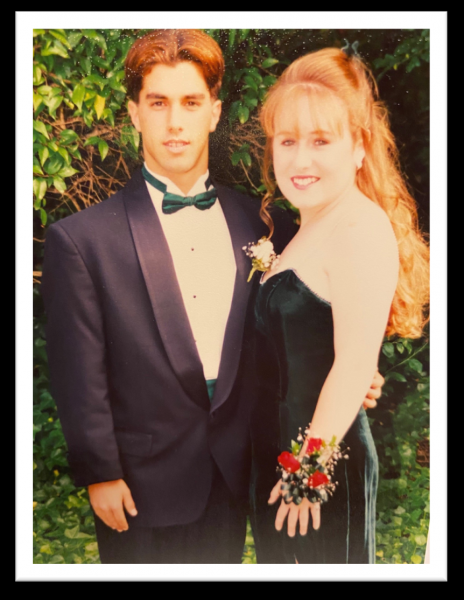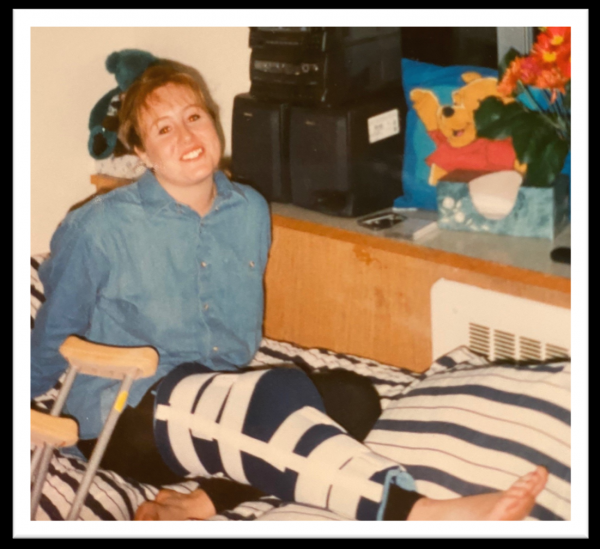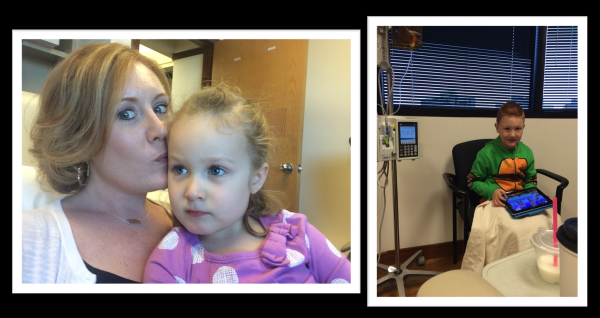If you met me, you’d quickly learn that I love to talk, my 14-year-old son Dylan and 11-year-old daughter Madeline are my heart and soul, and I beam with pride any time I get to share that my partner Lem hiked 2,330 miles of the Pacific Crest Trail. You’d also know that I grew up in San Diego, have grown to deeply appreciate life in the Pacific Northwest, and absolutely love my career in Communications.
But what you wouldn’t know is that I have polyarticular juvenile idiopathic arthritis (JIA), also known as juvenile rheumatoid arthritis, which is an autoimmune disease that causes joint pain and inflammation that can also impact connective tissues and organs. Rheumatoid arthritis impacts 1.5 million adults in the United States, while forms of juvenile arthritis are rarer, affecting around 300,000 children in the U.S. each year.
I don’t share that part of myself with many people. I’ve feared that people would question my abilities, or it would limit my career aspirations. I’ve never wanted my condition to slow me down, let alone change how people perceive me, especially in the workplace. But there have been times when I’ve had to swallow my pride and show up at work on crutches or sporting a walking boot and cane. Concerned co-workers have asked what was wrong, but I brushed off their kind questions quickly. I didn’t want them to think that just because I couldn’t walk that I couldn’t do my job.
As I’ve gotten older, I’ve shared my condition with trusted colleagues, but never fully felt comfortable telling my story – that is, until I joined Truveta. Being around people who are so passionate about the company’s vision to save lives with data is as personal for many of them as it is for me, and those personal connections are why I made the decision to join.
So today, thanks to the incredible culture of authenticity, transparency, and trust at Truveta, I am sharing my story in honor of National Rheumatoid Awareness Day.
“You’re too young to have arthritis.”
By the time I was finally diagnosed with JIA at 14, I’d already suffered from swollen joints and fatigue for more than half of my young life. I’d sat out of P.E. for months at a time, as doctors hoped that limiting activity would prevent swelling (it didn’t – it was more embarrassing than anything else). I had rounds of bloodwork (my mom used to tell me funny stories to distract me from the needle going into my little arm) and more x-rays, bone scans, and various tests than I can remember. My diagnosis was a relief – they finally knew what was wrong with me! However, I never got used to the reaction when I told people why I was on crutches. “You’re too young to have arthritis.” Sometimes I’d explain I have an autoimmune disease that attacks my joints and it’s different than what their grandparents have. Most of the time, I’d just smile.
As a teenager, I refused to let the swelling or fatigue get the better of me. During my junior year in high school, I recall showing up at my rheumatologist’s office on crutches because the swelling was so bad in my right knee that I couldn’t walk. While this was a regular occurrence, this visit felt more important – my junior prom was the next day, and I refused to miss it. She injected my knee with cortisone, and I promised to try take it easy (I said I promised to try. I didn’t say I’d actually do it. 😊) Thankfully the dress I’d planned to wear was floor-length so it could hide the knee brace I was forced to wear for support.

In college, I landed myself in the E.R. the second week of freshman year. My knee was so swollen that I was losing circulation to my leg, and it was turning blue. The E.R. doc wanted to drain my knee. I reassured him it was just a “normal” rheumatoid arthritis flare and to please just inject the joint with cortisone. He preferred I wait to see a rheumatologist and sent me home with crutches and a knee immobilizer. The next week I hobbled to classes until I could finally see a local rheumatologist.

Finally, the swelling happened too often and spread to other joints, moving beyond my knee to include my ankle and toes and continuing to impact my circulation. My doctor started me on hydroxychloroquine before I headed to France to study abroad. Thankfully hydroxychloroquine put me into remission for the majority of my 20s, enabling me to enjoy a “normal” life for the first time. I did yoga, went dancing with friends, and prepared to start a family. I consulted with my doctor as I considered pregnancy and was relieved to know I could remain on hydroxychloroquine while pregnant. She advised me that most women go into remission during pregnancy, but we’d be prepared if I experienced a flare after delivery. I was lucky enough to give birth to two beautiful, healthy children – Dylan and Madeline. My disease caused complications during both pregnancies, but my kids were worth it.
After childbirth, I ended up in a severe flare for several years that added my hips, connective tissues, and hands to the list of inflamed joints and tissue. At times I was on 40mg of prednisone for weeks on end. I tried several biologic injections and infusions. Some never worked. Others only worked for a matter of months or a year or so.
My kids were amazing and resilient throughout it all – they accompanied me to many infusion appointments, tablet and juice box in hand. We enjoyed movie nights or quiet time cuddling on the couch, careful to avoid mom’s sore joints. They never knew any different.

When COVID-19 hit, in many ways my family was prepared. Because of my level of immunosuppression, my kids already knew how to use hand sanitizer, wash their hands frequently, and be really aware of germs. What I wasn’t prepared for was encouraging them and managing their fears, while gently navigating my own. I am in the highest risk category due to the cocktail of biologics, steroids, and disease-modifying anti-rheumatic drugs (DMARDs) I take regularly to keep myself moving. I schedule the infusions on Fridays so I can take the entire day off work and have the weekend to sleep and recover. The biologic drug also puts me in the immunocompromised category. During my second week at Truveta, we shared our first COVID-19 insights, and I’ll be honest – it was a little frightening to know I’m in the high-risk category of patients who are more than twice as likely to end up hospitalized if I test positive for COVID-19.
But amidst the extra precautions, we have found many ways to safely enjoy life through the pandemic. And just last week I was very fortunate and relieved to receive Evusheld, an experimental emergency FDA-approved drug that attempts to prevent COVID-19 infection in severely immunosuppressed patients.
An attitude of gratitude
Through the amazing tenacity of my team of doctors, I am finally on a biologic that has me as close to remission as I think I’ll ever get. I have an amazing career I love, am able to volunteer at my kids’ school, and I even got back into a yoga routine as my 2022 new year’s resolution (and yes, I’ve kept it up so far, even despite some angry toes).
When people ask me what it’s been like to grow up with JIA, I tell them I’m grateful. I’m grateful that I’ve never known life without it, and I’ve always just adapted, smiled, and been stubborn enough to just keep moving forward. I don’t take for granted little things like walking or being able to type on a keyboard – there are days when I can’t do either. I’m grateful for the compassion I’ve learned for people living with all diseases and conditions. We all have our stories.
I’m grateful that my story has brought me to Truveta, surrounded by a company full of people who passionately believe in our vision to save lives with data and support each other in sharing our stories. Together, we can enable researchers to find cures faster, empower every clinician to be an expert, and help families make the most informed decisions about their care. And I am grateful to be one of those families Truveta may help someday.
